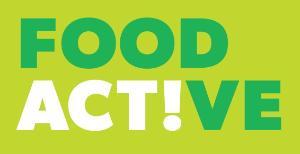Food Active Guest Blog: Playing Hide and Seek with Salt this Salt Awareness Week
It’s Salt Awareness Week! Read our latest guest blog from Zoe Davies, Registered Associate Nutritionist at Action on Salt, to find out more about the theme of this year’s Salt Awareness Week…
Peek-a-boo! We don’t see you!
Very few of us consider the effect a high salt diet has on our health, most likely because it doesn’t manifest in quite the same way as sugar or fat, whereby excess consumption is visibly and quickly seen through weight gain, tooth decay and type 2 diabetes.
Eating too much salt raises our blood pressure which is often referred to as ‘the silent killer’ because it doesn’t tend to produce any symptoms, silently increasing our risk of suffering a heart attack or stroke. 5 million adults in the UK unknowingly have high blood pressure, which is the leading cause of death and ill health globally.
In the UK, we are currently eating a third more salt than the recommended maximum of 6g a day. There is clear evidence that reducing salt intake can lower blood pressure, but many of us are unware we consume too much salt, because 75% of the salt we consume is already in the food we buy. It’s not just in the typically salty foods such as crisps and nuts, but it can also be found in sauces, bread, cereals and even hot chocolate.
Salt can ‘hide’ in so many different types of products, so how can we ‘seek’ out healthier alternatives?
Eye spy a label
Front of pack colour coded nutrition labelling is a simple and effective way that allows everyone to quickly glance at a product to see if the product is low (green), medium (amber), or high (red) for each nutrient. It allows a quick comparison between two similar products across different brands to see which one is healthier.
However not all manufacturers use it, leaving consumers in the dark, and it becomes all the more difficult when a product is from a fresh deli counter without packaging or when we eat out, for example in a restaurant or cafe. Where is the nutritional information then?
Whilst there are a few responsible establishments that place the calorie information, and sometimes also the fat, saturated fat, sugars and salt content of meals, on menus or at the point of sale, this is a very small percentage.
It doesn’t just fall onto us, as consumers, to look at food labels and change the way we eat to reduce our salt intake. Firstly, sometimes it just isn’t practical, feasible or achievable dependant on each individual’s situation, and secondly, salt can be hiding in the most obscure places.
Guess who else needs to help
The amount of salt present in similar products varies greatly dependant on the manufacturer, so it’s understandable to think this means we have options, but it just isn’t that simple.
Healthier products aren’t the most accessible in supermarkets and corner shops, often being more expensive and less promoted. It’s also important to remember that shops don’t sell every product on the market, meaning we would have to jump from shop to shop just to find the lower salt products, and even if we do that, not all products use front of pack colour coded nutrition labelling.
Restaurants don’t make it easy either. Most don’t display any salt information at the point of sale and all food comes ‘ready salted’. It shouldn’t be our responsibility to request less salt, it should be the default. Every meal out becomes a ‘Russian Roulette’ of how salty a meal is dependent on the chef in charge.
The food and drink we buy in store and out of home are constantly having their recipes changed, and as consumers, we often don’t notice. Companies have been doing this for a number of years, particularly with salt, and as such we’ve seen some great improvements in certain categories of food; cereals for example have seen over a 50% reduction in salt since 2005! Unfortunately, we are still consuming more salt than recommended and in many cases, food and drink sold to us in store and out of home are still unnecessarily high in salt. It’s important that all companies reduce salt as much as possible allowing us to buy and consume lower salt products/meals so that no matter the brand or which retailer we shop in, and no matter which restaurant or café we choose to eat out in, healthier options will be there.
--
END
--
See the blog on the Food Active website here



